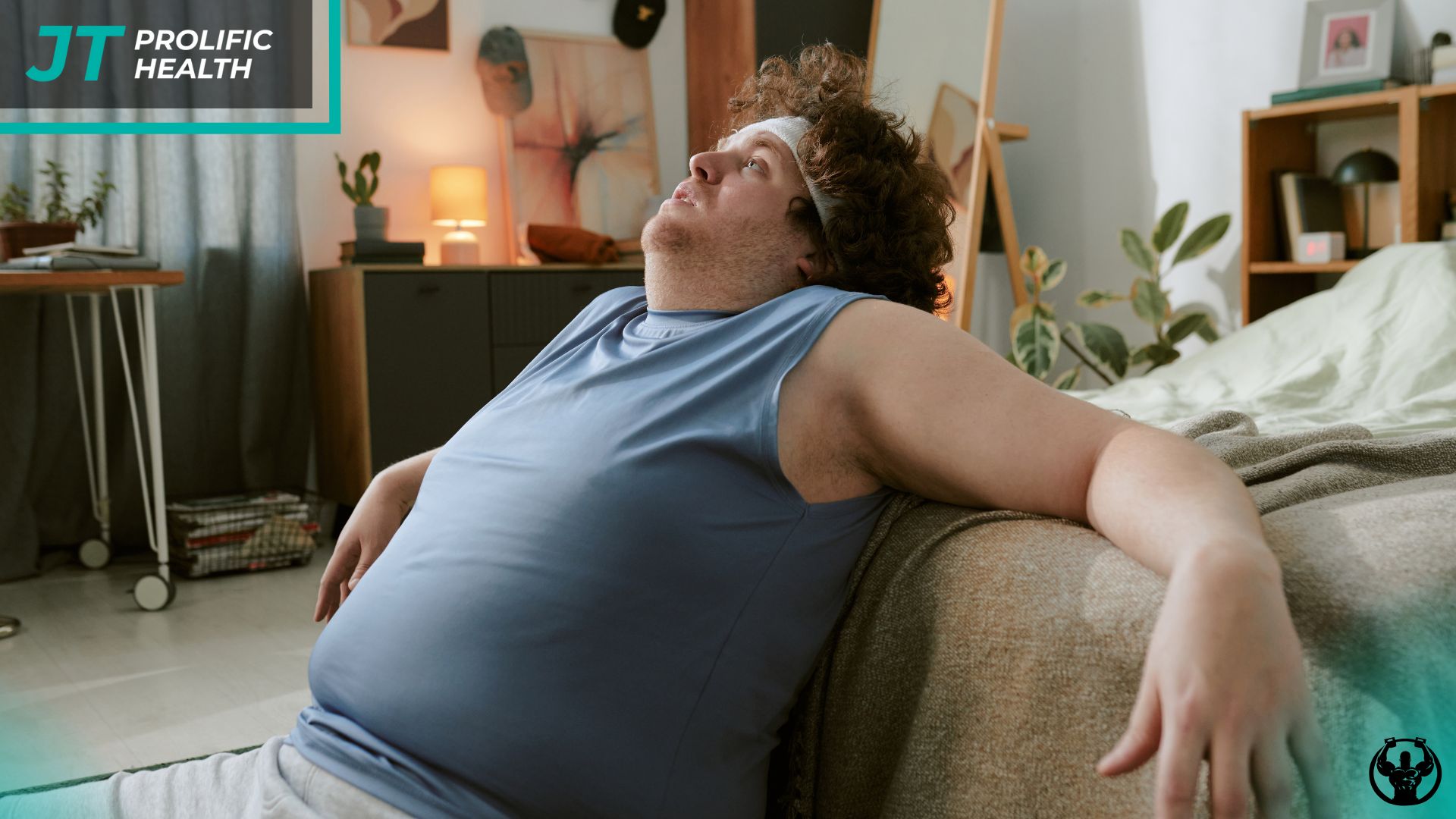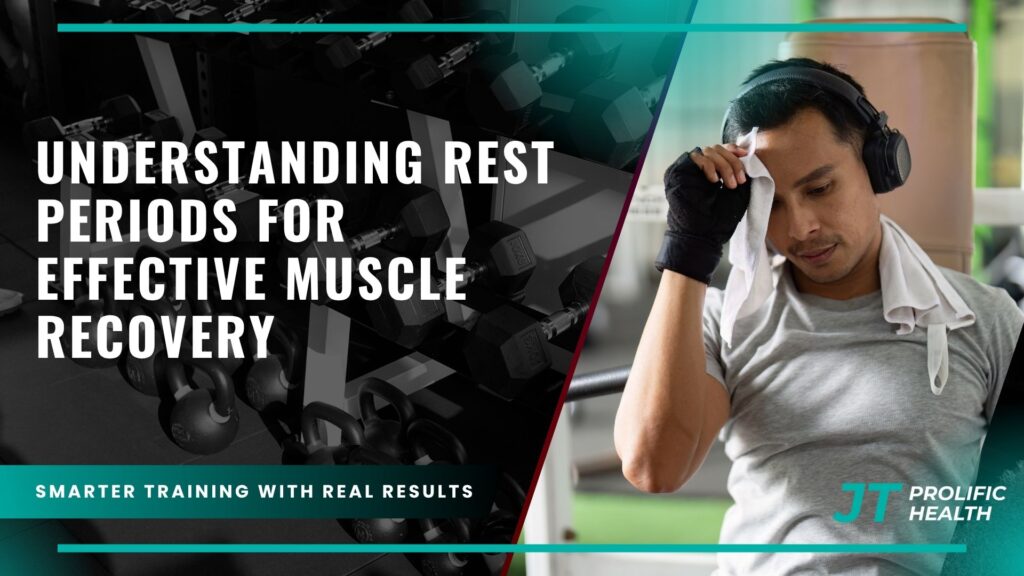Rest Periods for Muscle Recovery represent one of the most underestimated yet crucial components of effective muscle recovery and strength development. While many fitness enthusiasts focus intensely on the number of sets, repetitions, and weight lifted, the time spent resting between exercises often receives minimal attention. This oversight can significantly impact training outcomes, muscle growth, and overall performance progression.
Understanding the science behind rest intervals reveals their fundamental role in optimizing workout effectiveness. During exercise, muscles undergo stress that depletes energy stores, accumulates metabolic byproducts, and creates microscopic damage necessary for adaptation. The recovery period between sets allows these physiological processes to partially reset, enabling subsequent sets to maintain quality and intensity.
Professional trainers recognize that strategic rest period manipulation can dramatically influence training outcomes. Whether the goal involves building maximum strength, promoting muscle hypertrophy, enhancing muscular endurance, or improving power output, the duration and structure of rest intervals must align with specific physiological demands. This alignment ensures that each training session maximizes its intended adaptations while minimizing unnecessary fatigue accumulation.
The complexity of rest period optimization extends beyond simple time measurements. Factors such as training experience, exercise selection, load intensity, individual recovery capacity, and overall program structure all influence optimal rest duration. Additionally, active versus passive recovery strategies during rest intervals can further enhance training effectiveness and long-term progress.
Modern fitness science has evolved to provide evidence-based guidelines for rest period prescription across different training goals. These recommendations consider the interplay between energy system recovery, neuromuscular fatigue, hormonal responses, and psychological readiness. Understanding these relationships empowers both trainers and individuals to make informed decisions about their training structure and recovery protocols.
Key Takeaways
For additional context, see this comprehensive guide.
- Rest periods directly influence training quality and adaptation outcomes – Proper rest intervals ensure that subsequent sets maintain the intended intensity and volume necessary for specific training goals, whether focused on strength, hypertrophy, or endurance development.
- Different training goals require specific rest interval durations – Strength training typically demands 3-5 minutes between sets, hypertrophy training benefits from 1-3 minutes, while muscular endurance training often uses 30-90 seconds to maintain the desired metabolic stress.
- Energy system recovery determines optimal rest duration – The phosphocreatine system requires 2-3 minutes for near-complete restoration, while lactate clearance and pH normalization may need 3-5 minutes depending on exercise intensity and individual factors.
- Individual factors significantly impact rest period requirements – Training experience, age, fitness level, exercise selection, and load intensity all influence how much rest an individual needs between sets to maintain performance quality.
- Active recovery strategies can enhance rest period effectiveness – Light movement, breathing exercises, and targeted stretching during rest intervals can promote faster recovery compared to complete passive rest in many situations.
- Progressive rest period manipulation supports long-term adaptation – Systematically adjusting rest intervals over time can provide novel training stimuli and prevent adaptation plateaus while supporting continued progress toward fitness goals.
- Monitoring performance indicators helps optimize rest periods – Tracking metrics such as repetition quality, load maintenance, heart rate recovery, and subjective readiness provides valuable feedback for individualizing rest interval prescriptions.
Understanding the Science of Rest Intervals


For additional context, see detailed information on this topic.
The physiological foundation of rest periods centers on energy system recovery and metabolic restoration within muscle tissue. During high-intensity exercise, muscles primarily rely on the phosphocreatine system for immediate energy production. This system provides rapid energy for approximately 10-15 seconds of maximal effort but requires 2-3 minutes for substantial restoration. Understanding this timeline helps explain why shorter rest periods often result in decreased performance on subsequent sets.
Lactate accumulation and pH changes within muscle tissue represent another critical factor influencing rest period requirements. High-intensity exercise produces lactate as a byproduct of anaerobic metabolism, leading to decreased muscle pH and impaired contractile function. The body’s ability to clear lactate and restore normal pH levels varies significantly between individuals and depends on factors such as cardiovascular fitness, muscle fiber composition, and training adaptations.
Neuromuscular fatigue also plays a substantial role in determining optimal rest intervals. The nervous system’s ability to recruit motor units and generate force becomes compromised during intense exercise. Central nervous system fatigue can persist longer than metabolic recovery, particularly during heavy strength training sessions. This explains why compound exercises involving large muscle groups and heavy loads typically require longer rest periods compared to isolation exercises.
Hormonal responses during exercise and recovery further influence rest period optimization. Acute hormonal changes, including elevations in growth hormone, testosterone, and cortisol, can be influenced by rest interval duration. Research suggests that shorter rest periods may promote greater growth hormone responses, while longer rest periods better support testosterone maintenance during heavy training sessions.
The psychological component of rest periods often receives insufficient attention despite its significant impact on training quality. Mental fatigue, motivation, and focus all influence the ability to maintain high-intensity effort across multiple sets. Adequate rest intervals allow for psychological recovery and preparation, enabling individuals to approach each set with appropriate mental engagement and concentration.
Rest Period Guidelines for Different Training Goals


Strength training demands the longest rest intervals due to the high neuromuscular and metabolic demands of heavy resistance exercise. When lifting loads exceeding 85% of one-repetition maximum, rest periods of 3-5 minutes allow for adequate phosphocreatine restoration and nervous system recovery. This duration ensures that subsequent sets can maintain the high force production necessary for strength adaptations. Professional trainers often recommend extending rest periods to 5-7 minutes for complex movements like squats, deadlifts, and bench presses when training at maximum intensities.
Hypertrophy training benefits from moderate rest intervals that balance metabolic stress with performance maintenance. Rest periods of 1-3 minutes create an optimal environment for muscle growth by maintaining sufficient training volume while promoting metabolic accumulation. This timeframe allows partial recovery of energy systems while preserving the metabolic stress that contributes to hypertrophy signaling pathways. The specific duration within this range often depends on exercise selection, with compound movements requiring longer rest than isolation exercises.
Muscular endurance training typically employs shorter rest intervals to maintain the desired metabolic stress and cardiovascular challenge. Rest periods of 30-90 seconds prevent complete recovery, forcing muscles to adapt to working in a partially fatigued state. This approach enhances the muscle’s ability to clear metabolic byproducts, improve capillarization, and increase mitochondrial density. The incomplete recovery between sets specifically targets the physiological adaptations associated with endurance performance.
Power training requires careful rest period management to maintain the explosive nature of movements. Since power development depends on the ability to generate force rapidly, adequate rest of 2-4 minutes between sets ensures that neuromuscular function remains optimal. Insufficient rest in power training can quickly degrade movement quality and reduce the training stimulus for power adaptations. Many professional trainers specializing in athletic development emphasize the importance of complete recovery between power training sets.
Circuit training and metabolic conditioning often manipulate rest periods to create specific physiological challenges. These training methods may use structured work-to-rest ratios, such as 30 seconds of work followed by 15 seconds of rest, to target specific energy systems and create desired metabolic responses. The strategic manipulation of rest intervals in circuit training can enhance cardiovascular fitness while maintaining resistance training benefits.
Factors Influencing Individual Rest Period Needs


Training experience significantly impacts rest period requirements, with beginners often needing longer recovery times compared to advanced trainees. Novice exercisers typically experience greater neuromuscular fatigue and less efficient energy system function, necessitating extended rest intervals to maintain exercise quality. As individuals develop training adaptations, their recovery capacity improves, potentially allowing for shorter rest periods while maintaining performance standards.
Age-related changes in recovery capacity influence optimal rest interval prescription across different life stages. Older adults may require longer rest periods due to decreased cardiovascular efficiency, slower metabolic recovery, and reduced neuromuscular function. However, these changes vary significantly between individuals, and chronological age alone should not determine rest period recommendations. Understanding when to seek professional guidance becomes particularly important for older adults beginning exercise programs.
Exercise selection dramatically affects rest period requirements, with compound movements demanding longer recovery times than isolation exercises. Multi-joint exercises like squats, deadlifts, and pull-ups involve larger muscle groups and create greater systemic fatigue. Single-joint exercises such as bicep curls or leg extensions typically require shorter rest periods due to their localized nature and reduced overall physiological demand.
Load intensity represents one of the most significant factors determining rest period needs. Higher intensities require longer rest intervals to maintain performance quality across multiple sets. The relationship between load and rest period requirements follows a generally predictable pattern, with loads above 90% of maximum often requiring 4-6 minutes of rest, while loads below 70% may only need 1-2 minutes for adequate recovery.
Individual physiological characteristics, including muscle fiber composition, cardiovascular fitness, and metabolic efficiency, create substantial variation in rest period requirements. Individuals with predominantly fast-twitch muscle fibers may need longer rest periods for strength training, while those with greater slow-twitch fiber composition might recover more quickly. Cardiovascular fitness level also influences recovery speed, with better-conditioned individuals often demonstrating faster heart rate recovery and lactate clearance.
Environmental factors such as temperature, humidity, and altitude can significantly impact rest period needs. Hot and humid conditions increase physiological stress and may require extended rest intervals to prevent overheating and maintain performance. Similarly, training at altitude affects oxygen availability and may necessitate longer recovery periods, particularly during the acclimatization phase.
Active vs. Passive Recovery Strategies
Active recovery during rest intervals involves light movement or specific activities designed to enhance recovery processes compared to complete rest. Research demonstrates that light aerobic activity during rest periods can accelerate lactate clearance and promote faster restoration of muscle pH levels. Activities such as walking, light cycling, or gentle movement patterns can maintain blood flow to working muscles while avoiding additional fatigue accumulation.
Breathing exercises represent a highly effective active recovery strategy that can be implemented during any rest interval. Controlled breathing techniques help activate the parasympathetic nervous system, promoting relaxation and recovery. Deep diaphragmatic breathing can enhance oxygen delivery to tissues while reducing stress hormone levels. Many experienced trainers incorporate specific breathing protocols during rest periods to optimize both physiological and psychological recovery.
Targeted stretching during rest intervals can address muscle tension and maintain mobility without interfering with subsequent set performance. Light static stretching of non-working muscle groups or gentle dynamic movements can promote blood flow and reduce muscle stiffness. However, intensive stretching of muscles about to be trained should be avoided, as it may temporarily reduce force production capacity.
Passive recovery involves complete rest with minimal physical activity during rest intervals. This approach may be most appropriate during high-intensity strength training sessions where any additional activity could interfere with nervous system recovery. Passive recovery allows for complete energy system restoration and may be preferred when training at maximum intensities or when fatigue levels are already elevated.
Hydration and nutrition strategies during rest periods can significantly impact recovery quality and subsequent performance. Proper fluid intake helps maintain blood volume and supports metabolic processes, while strategic nutrient timing can provide energy substrates for recovery. Professional guidance on nutrition timing can help optimize these recovery strategies for individual needs and training goals.
Mental preparation and visualization techniques during rest intervals can enhance both recovery and subsequent performance. Using rest periods for mental rehearsal, technique visualization, or stress reduction can improve focus and movement quality. This psychological component of active recovery often receives insufficient attention despite its potential impact on training outcomes.
Monitoring and Adjusting Rest Periods
Heart rate monitoring provides valuable objective feedback for optimizing rest period duration and assessing recovery status. Tracking heart rate recovery patterns can help individuals determine when they are physiologically ready for the next set. Generally, heart rate should return to within 10-20 beats per minute of resting levels before initiating the subsequent set, though this varies based on training intensity and individual characteristics.
Performance metrics such as repetition completion, load maintenance, and movement quality serve as practical indicators of rest period adequacy. If performance significantly decreases across sets, longer rest intervals may be necessary. Conversely, if performance remains consistently high with shorter rest periods, this may indicate efficient recovery and the potential for training progression.
Subjective measures of readiness, including perceived exertion, motivation, and confidence levels, provide important insights into optimal rest period timing. Experienced trainees often develop an intuitive sense of their recovery status and can effectively self-regulate rest intervals based on internal cues. Professional monitoring techniques can help individuals develop this self-awareness and improve their ability to optimize rest periods.
Progressive rest period manipulation can serve as a training variable to promote continued adaptation and prevent plateaus. Systematically reducing rest intervals over time while maintaining performance standards can enhance work capacity and metabolic efficiency. Alternatively, periodically extending rest periods may allow for increased training loads and strength development.
Technology integration, including smartphone apps, wearable devices, and gym equipment with built-in timers, can help standardize and track rest period adherence. Consistent timing helps ensure that rest intervals align with training goals and provides data for future program adjustments. However, technology should supplement, not replace, attention to physiological and psychological readiness cues.
Individual response patterns to different rest interval strategies should be documented and analyzed over time. Some individuals may respond better to longer rest periods with higher intensities, while others may thrive with shorter rest intervals and moderate loads. Proper preparation for training sessions includes understanding personal rest period preferences and requirements.
Prolific Health’s Approach to Rest Period Optimization
At Prolific Health, our experienced trainers understand that rest period optimization represents a crucial component of effective program design and client success. We recognize that each individual brings unique physiological characteristics, training goals, and recovery capacities that must be considered when prescribing rest intervals. Our evidence-based approach combines scientific principles with practical application to ensure that every client receives personalized rest period recommendations.
Our assessment process includes evaluating client fitness levels, training experience, and specific objectives to determine appropriate rest interval starting points. We utilize various monitoring techniques, including heart rate tracking, performance metrics, and subjective feedback, to continuously refine rest period prescriptions throughout the training process. This individualized approach ensures that rest intervals support rather than hinder progress toward client goals.
Education plays a central role in our rest period optimization strategy. We teach clients to understand the physiological rationale behind different rest interval recommendations and help them develop self-monitoring skills. This knowledge empowers clients to make informed decisions about their training and maintain effective practices even when training independently.
Our trainers stay current with emerging research on rest interval optimization and recovery strategies. We regularly update our protocols based on new scientific evidence and practical insights gained from working with diverse client populations. This commitment to continuous learning ensures that our clients benefit from the most effective and up-to-date rest period strategies available.
The integration of rest period optimization with other program variables, including exercise selection, load progression, and overall periodization, reflects our comprehensive approach to fitness programming. We understand that rest intervals cannot be considered in isolation but must align with all aspects of the training program to maximize effectiveness and support long-term success.
Frequently Asked Questions
How long should I rest between sets for muscle building?
For muscle building (hypertrophy), rest periods of 1-3 minutes are generally optimal. This duration allows partial recovery of energy systems while maintaining the metabolic stress that promotes muscle growth. Compound exercises may require rest periods toward the upper end of this range, while isolation exercises often need less recovery time.
Do I need longer rest periods as I get older?
Age can affect recovery capacity, and older adults may benefit from slightly longer rest periods to maintain exercise quality and safety. However, individual fitness level and training experience often matter more than chronological age. It’s important to listen to your body and adjust rest intervals based on your personal recovery needs rather than age alone.
Should I do anything during my rest periods, or just sit still?
Light active recovery, such as walking or gentle movement, can enhance recovery by promoting blood flow and lactate clearance. However, avoid activities that could fatigue the muscles you’re about to train. Deep breathing exercises and light stretching of non-working muscles can also be beneficial during rest intervals.
How do I know if my rest periods are too short or too long?
Monitor your performance across sets – if you’re unable to maintain repetitions or load, your rest periods may be too short. Conversely, if you feel completely recovered and could have continued much earlier, you might be resting too long. Heart rate recovery and subjective readiness are also good indicators of appropriate rest timing.
Can shorter rest periods help me burn more calories?
Shorter rest periods can increase the metabolic demand of your workout and may lead to greater calorie burn during and immediately after exercise. However, this approach may compromise your ability to maintain high intensities, potentially reducing overall training effectiveness. Balance metabolic benefits with your primary training goals.
Should rest periods be different for upper body vs. lower body exercises?
Lower body exercises often involve larger muscle groups and may require slightly longer rest periods compared to upper body exercises. However, the specific exercise, load, and training goal are more important factors than simply upper versus lower body. Complex movements like squats and deadlifts typically need more recovery time regardless of muscle groups involved.
How do rest periods change when I’m trying to lose weight?
When weight loss is the primary goal, slightly shorter rest periods can increase caloric expenditure and maintain an elevated heart rate throughout the workout. However, don’t sacrifice exercise quality or safety for shorter rest intervals. The most important factor for weight loss remains creating a sustainable caloric deficit through diet and exercise.
Is it okay to check my phone during rest periods?
While brief phone use during longer rest periods may not significantly impact performance, it’s generally better to focus on recovery and preparation for the next set. Use rest periods for hydration, breathing exercises, or mental preparation rather than distractions that might extend rest time unnecessarily or reduce focus on your workout.
Conclusion
Understanding and implementing appropriate rest periods represents a fundamental aspect of effective training that can significantly impact your fitness results. The strategic manipulation of rest intervals allows you to align your training with specific goals, whether focused on building strength, promoting muscle growth, enhancing endurance, or developing power. By recognizing that rest periods are not merely downtime but active components of your training program, you can optimize your workouts and accelerate progress toward your objectives.
The science behind rest interval optimization reveals the complex interplay between energy system recovery, neuromuscular fatigue, and metabolic restoration. This understanding empowers you to make informed decisions about your training structure rather than relying on arbitrary time periods or outdated recommendations. Individual factors such as training experience, age, exercise selection, and load intensity all influence optimal rest duration, highlighting the importance of personalized approaches to rest period prescription.
Monitoring and adjusting rest periods based on performance feedback, physiological indicators, and subjective readiness ensures that your training remains effective and continues to challenge your body appropriately. Whether you choose active or passive recovery strategies during rest intervals, the key lies in consistency and alignment with your overall training goals. Professional guidance can be particularly valuable when dealing with special circumstances or when seeking to optimize advanced training protocols.
Remember that rest period optimization is an ongoing process that should evolve with your fitness level, goals, and circumstances. By paying attention to this often-overlooked aspect of training, you can enhance the effectiveness of every workout session and build a sustainable foundation for long-term fitness success. The investment in understanding and implementing proper rest periods will pay dividends in improved performance, reduced injury risk, and accelerated progress toward your health and fitness objectives.




